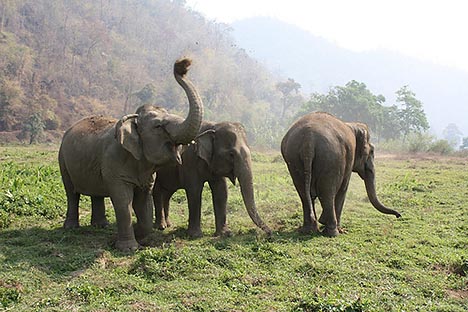Quick Glance
- India now has an estimated 6,327 river dolphins, including 6,324 Gangetic dolphins and 3 Indus river dolphins, according to a first-of-its-kind national survey conducted between 2021 and 2023.
- Uttar Pradesh leads in dolphin numbers (2,397), while Bihar has the highest dolphin density and healthier river ecosystems.”
- The survey, part of Project Dolphin, covered 8,507 km across 28 rivers using visual observation, hydrophones, and scientific methods like the Lincoln-Peterson Chapman’s formula.
- Apart from dolphins, important sightings included gharials, smooth-coated otters, endangered turtles, and 81 bird species, highlighting the biodiversity of Indian river systems.
The Ganga river dolphin pops its head out on the river surface for a mere 1.26 seconds every 2 minutes before diving back underwater. Blink, and you’ll miss it. Even if you’re watching closely, staring at the same spot won’t help—these aquatic mammals are always on the move, and when they resurface for air again, it could be anywhere.
Needless to say, spotting a river dolphin is no easy feat—and counting them is an even greater challenge. Rising to meet this very challenge, 455 forest department personnel from eight Indian states, along with researchers from the Wildlife Institute of India and partnering NGOs, undertook a massive two-year survey between 2021 and 2023. They covered 28 rivers across 8,507 kilometers to estimate, for the first time, the population of river dolphins in India.
The results, released in March this year, reveal that India is home to 6,327 river dolphins—6,324 Gangetic dolphins and 3 Indus river dolphins both classified as Endangered by the International Union for Conservation of Nature (IUCN).
Platanista gangetica – the living fossils of the river Ganga
River dolphins are unique examples of the evolutionary journey living beings undergo to survive. All river dolphins evolved from marine dolphins millions of years ago. In the case of the Gangetic Dolphins, this journey began around 20 million years ago when tectonic changes and shifting sea levels transformed coastal landscapes in the Indian subcontinent.
Shallow seas gave way to river systems, and some marine dolphins followed fish into these new habitats. This transition from sea to river wasn’t just a detour—it triggered a major evolutionary shift that reshaped their body and behavior.
Over time, these dolphins became fully adapted to freshwater life. The murky, sediment-rich waters of rivers like the Ganga and Brahmaputra made vision less useful, so the species evolved near-blindness, relying instead on highly advanced echolocation to navigate and hunt.
There are other river dolphins around the world that evolved in a similar manner. South American river dolphins—like the Amazon river dolphin (Inia geoffrensis)—and the now functionally extinct Yangtze river dolphin (Lipotes vexillifer) in China evolved from their very own marine ancestors.
While South American and Chinese river dolphins are like cousins who moved into the neighborhood recently, the Ganga river dolphin is more like an ancient native—a living fossil and one of the original pioneers of river life, with a story that stretches much deeper into evolutionary history.
The skull, jaw structure, and sonar system of gangetic dolphins are all quite different from those of the Amazon or the Yangtze river dolphin. Even their echolocation is more specialized, helping the species navigate the highly turbid rivers of the Indian subcontinent, where visibility is close to zero.
Read More: Uttar Pradesh Sees Rise in Ganga River Dolphin Numbers
Counting India’s National Aquatic Animal
In 2010 the Gangetic Dolphin was named the National Aquatic Animal of India. In 2020 the government announced Project Dolphin in which both river and marine dolphins were brought under a single conservation programme that aimed to monitor, educate communities and work towards conservation of all dolphin species found in India. It is under this Project that the 2021-23 rivers survey to understand the population status of river dolphins in India was conducted.
During the survey, 58 rivers were covered with 28 surveyed on boats and remaining on road, where the presence of Gangetic dolphin was known to be seasonal.
To ensure that no dolphin was missed during this survey, two independent observation teams were used as they navigated Ganga, its tributaries, Brahmaputra, its tributaries and also river Beas in Punjab to spot the Indus River Dolphin.
The survey team also used a hydrophone that is dragged under water to record any dolphin clicks if a dolphin cannot be spotted on the surface and is probably under water.
The data was collected for,
- Dolphin abundance
- Anthropogenic (human led) pressures
- Habitat types
- Presence of other related aquatic species
The scientific methods used to analyse the data and finally come at an accurate number were the Lincoln-Peterson’s Chapman’s corrected formula and the Huggins method.
River Dolphin Numbers in States and Rivers of India
The results showed the following population status for the endangered Ganga river dolphins:
- Uttar Pradesh: 2,397 (highest)
- Bihar: 2,220
- West Bengal: 815
- Assam: 635
- Jharkhand: 162
- Madhya Pradesh & Rajasthan: 95
By river systems:
- Ganga: 3,275
- Ganga tributaries (Chambal, Sharda, Yamuna, Rapti, Geruwa, Kauriala, Ghagra, Gandak, Mahananda, Kosi, Rupnarayan, Mundeshwari, Baksi, Shilabati, Dwarkeswar, Torsa, Kaljani, Churni): 2,414
- Brahmaputra: 584
- Brahmaputra tributaries (Subansiri, Beki, Kopili, Kulsi, Barak): 51
For the Indus river dolphin survey in Beas river, the team found 3 dolphins. Unfortunately, the Punjab forest department reported the death of one of the dolphins and the latest number is two in India. A larger population of these dolphins are found in the Indus River basin of Pakistan.
Read more: 13 Facts to Know the Gangetic Dolphin in a Better Way
Additional Findings
- While the number of river dolphins is highest in Uttar Pradesh, the density is highest in Bihar with a fairly even distribution and no coldspots i.e. patches of the river where no dolphins are found.
- In Bihar, there is a relatively healthy status of related species like the Vulnerable Smooth-coated otter, and 81 species of birds including the Endangered Greater Adjutant bird.
- Apart from dolphins, the maximum number of Gharials, Muggers and Indian skimmers were seen in River Chambal that marks the boundary between Madhya Pradesh, Uttar Pradesh and Rajasthan.
- The Critically Endangered 3 striped roof turtle, red crowned roofed turtle, and endangered Ganges soft shelled turtle were also recorded in Chambal river during the survey.
Find the detailed survey report here







